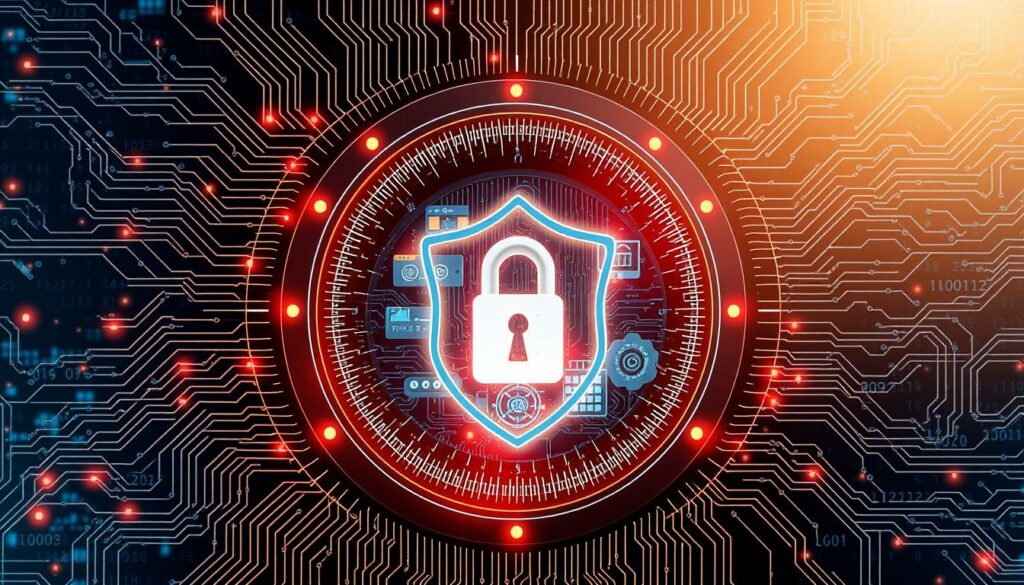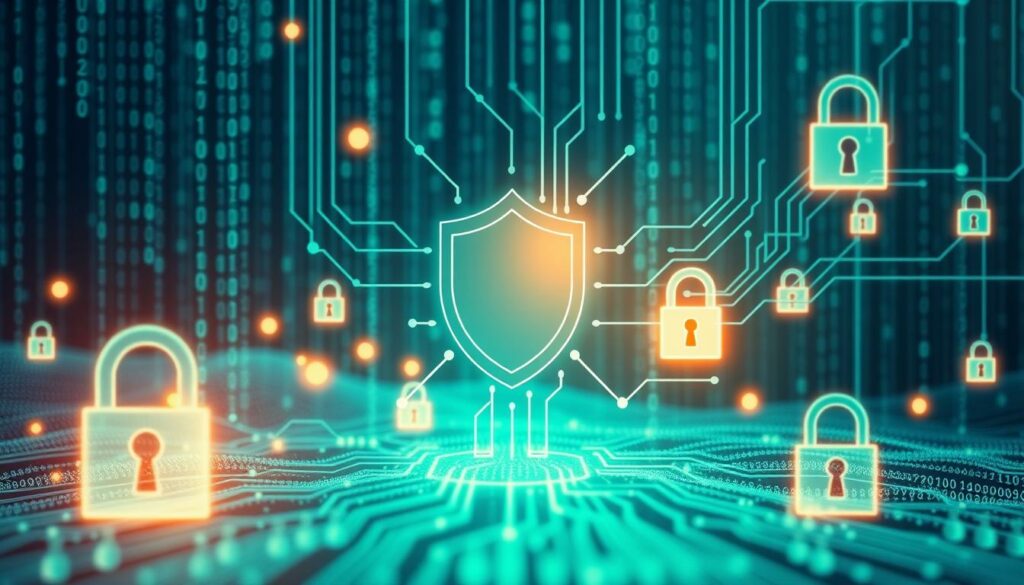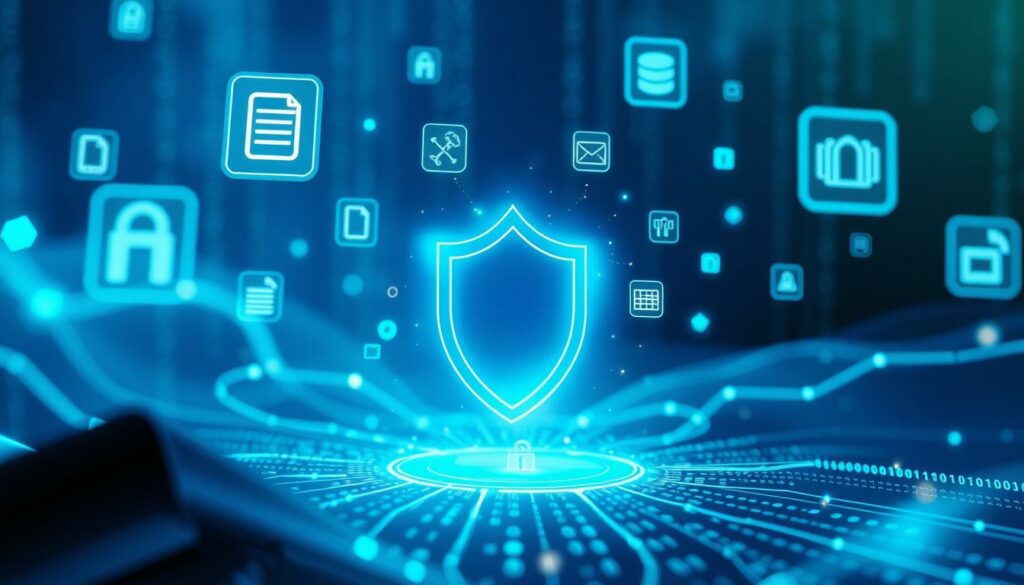Data Protection vs Information Security: Understanding the Gap
In today’s interconnected digital landscape, safeguarding data has become a top priority for businesses and individuals alike. With data breaches costing companies millions and eroding public trust, understanding the distinction between data protection and information security is more important than ever.
Both concepts are critical for compliance, trust-building, and resilience. Data protection laws, such as GDPR and CCPA, mandate strict guidelines for securing personal data and maintaining privacy. On the other hand, robust information security measures act as the first line of defense, preventing breaches and ensuring system integrity.
Let’s look closer at the differences between data protection and information security and see why both are essential in today’s digital world.
Defining Data Protection and Information Security
Data protection and information security are key to keeping sensitive information safe. They are vital for businesses to grasp and apply in today’s digital world.
What Is Data Protection?
Data protection includes rules and steps to ensure the legal and ethical use of data and to keep personal information private. Laws in many countries protect online data privacy. In the UK, the Data Protection Act 2018 and the GDPR set the rules.
What Is Information Security?
Information security protects digital data from unauthorized access and damage. It includes cybersecurity and risk management. Companies use encryption and other tools to boost their security. The Information Security Act covers important areas like healthcare and finance.
Key Differences
While data protection and information security are closely related, they address distinct aspects of safeguarding sensitive information. Understanding their differences is crucial for developing a comprehensive approach to data safety.
- Focus: Data protection is about privacy and legal compliance, while information security emphasizes technical measures to secure data.
- Scope: Data protection pertains to personal information; information security covers all types of data.
- Approach: Legal frameworks guide data protection, while universal technical strategies support information security.
By understanding these differences, businesses and individuals can build a robust framework that combines legal compliance with strong technical defenses.
Importance of Data Protection
In our increasingly digital age, data protection has become more crucial than ever. With cyber threats on the rise, safeguarding sensitive information is essential to maintaining privacy, complying with regulations, and upholding ethical standards.
Governments worldwide are enforcing strict data protection laws to ensure privacy and accountability. The GDPR in Europe and the CCPA in the US set stringent guidelines, with penalties reaching up to $5.05 million for non-compliance. These laws emphasize the critical need for businesses to prioritize data protection.
Protecting personal information is no longer optional—it’s a necessity. Cyberattacks frequently target small businesses, proving that no organization is immune. Implementing robust security measures, such as encryption and regular audits, is essential to reducing vulnerabilities and ensuring data safety.
Beyond legal compliance, data protection is an ethical obligation. Companies must handle personal information with care and respect to build trust and foster long-term relationships. In 2024, an estimated 75% of global data fell under advanced privacy laws, further underscoring the importance of adopting ethical data practices.
In a world where data is power, safeguarding it isn’t just about following the law—it’s about doing what’s right.
Significance of Information Security
Information security is key to protecting what matters most to businesses and keeping customers’ trust. In our digital world, companies face many threats to their data and systems. Strong risk management and cybersecurity are vital to keeping sensitive information safe and avoiding expensive breaches.
- Protecting Organizational Assets: Businesses must focus on safeguarding their valuable assets. This includes things like intellectual property, financial data, and customer info. Using tools like firewalls, encryption, and access controls helps secure sensitive data from unauthorized access. A proactive approach to information security helps companies stay ahead and avoid risks.
- Preventing Data Breaches: Data breaches can be very costly for businesses. In 2022, the average breach in the U.S. cost $9.44 million. To avoid this, companies need to have strong data privacy measures and keep their security systems up to date. Training employees on how to protect data is also crucial for a strong security stance.
- Maintaining Customer Trust: Keeping customer trust is essential for businesses today. A security issue can harm a company’s reputation and lead to customer loss. By focusing on information security and showing they care about customer data, businesses can build and maintain trust. This includes following data protection laws like GDPR and CCPA, which set rules for handling personal info.

Common Misconceptions About Data Protection
Data protection is a complex field often misunderstood. Many confuse data privacy with data security, leading to gaps in protection strategies. Let’s address some common misconceptions and clarify the facts.
- Overlapping Terms: People often assume data protection and information security are identical. While related, they differ: Data protection safeguards personal information and ensures privacy, while information security covers the broader protection of all organizational data.
- Assumptions About Compliance: Many believe compliance with one regulation guarantees comprehensive data protection. This is incorrect. With privacy laws evolving globally, organizations must continually adapt. In 2019, fines for privacy violations totaled an estimated €350 million, illustrating the need for ongoing effort and flexibility.
- The Role of Technology: There’s a tendency to overestimate technology’s role. Tools like encryption are essential but insufficient on their own. Human error accounts for 99% of cyberattacks, emphasizing the importance of employee training and strong policies. True security requires a holistic approach beyond tools like VPNs.
Understanding these misconceptions is crucial for effective strategies. Data protection is not just about technology or compliance. It demands a balanced approach that integrates legal requirements, ethical considerations, and practical security measures.
Common Misconceptions About Information Security
People often misunderstand information security, which leads to gaps in protection. Let’s debunk some myths and clarify their true scope.
- Information Security vs. Cybersecurity: People often conflate information security and cybersecurity, but they are distinct. Information security encompasses both digital and physical data protection, while cybersecurity focuses exclusively on digital threats. Effective risk management requires integrating both disciplines.
- The Scope of Information Security: Information security extends beyond IT systems to include policies, procedures, and training. Protecting data is a shared responsibility across the organization, not just the IT department. With up to 75% of data breaches originating from internal sources, company-wide security measures are essential.
- Myths About Access Control: Strong passwords alone don’t ensure effective access control. True security requires layered protections like two-factor authentication and the principle of least privilege. These measures are cost-effective compared to the $3.86 million average cost of a data breach.

The Relationship Between Data Protection and Information Security
Data protection and information security closely relate to today’s digital world. Organizations must understand how they work together. This is key to building a strong security framework.
Data protection aims to protect personal information. Information security, on the other hand, covers a wider range of data. The Federal Trade Commission reported nearly 5 million fraud and identity theft cases in 2020.
This shows the importance of both. By integrating data protection and information security, companies can better fight cyber attacks, which happen every 40 seconds on average.
Effective risk management requires clear policies and procedures. The SRA Handbook stresses the need for information security training. Following data protection laws like GDPR and CCPA is also key.
These laws guide how organizations handle personal data. They cover everything from getting consent to implementing security measures.
A comprehensive risk management strategy needs to integrate data protection and information security effectively. This strategy includes using encryption, authentication, and access controls. Regular security audits and employee training are also crucial.
By aligning security measures with data protection regulations, companies can foster a culture of security awareness. This helps protect valuable data assets better.

Tools and Technologies for Data Protection
Data protection is key in today’s digital world. Companies need strong tools to keep sensitive info safe. Let’s look at some important technologies for keeping data safe and private.
Encryption Tools
Encryption is a big part of keeping data safe. It makes data unreadable to those who shouldn’t see it. Many businesses use encryption to store data and data in transit. This way, even if someone intercepts the data, it stays safe. File compression with encryption also helps protect data during transmission.
Data Loss Prevention Software
Data loss prevention (DLP) software is crucial for keeping sensitive info safe. It watches and controls how data moves within a company. DLP tools can spot and stop unauthorized data sharing.This tech is important for following rules like GDPR and HIPAA.
Cloud Security Solutions
More businesses are moving to the cloud, making cloud security very important. Cloud security solutions protect data in cloud spaces. They offer access control, data encryption, and threat detection. Cloud security helps companies follow data protection laws and enjoy cloud benefits.
Using these tools, companies can build a strong defense against data breaches. Encryption, data loss prevention, and cloud security work together to keep sensitive info safe. This all-around approach helps businesses meet legal needs and gain customer trust.

Tools and Technologies for Information Security
In the fast-changing world of cybersecurity, companies need strong tools to keep their digital stuff safe. Let’s look at some key technologies that are the heart of today’s information security plans.
Firewalls and Intrusion Detection Systems
Firewalls are the first defense, watching and controlling network traffic. They work with intrusion detection systems to spot and handle threats. These tools are key because 85% of data breaches come from stolen login info.
Antivirus Software
Antivirus software is crucial for keeping things safe and finding and removing malware. With phishing attacks causing 80% of security issues, having a good antivirus is more crucial than ever.
Security Information and Event Management (SIEM)
SIEM systems analyze security alerts in real time from network hardware and apps. They are key in quickly finding and dealing with threats. SIEM tools are vital for protecting data, helping companies follow rules, and keeping sensitive information safe.
With global cybersecurity spending set to hit over $1 trillion by 2021, it’s important to invest in these tools. They help build a strong defense against cyber threats. This way, companies can protect their data and keep customer’s trust in our digital world.
Future Trends in Data Protection and Information Security
The digital world is evolving rapidly, bringing both challenges and opportunities in data protection and information security. Staying updated is crucial for businesses and individuals.
Global data protection laws are becoming stricter. In 2023, companies paid over €2 billion in GDPR fines, highlighting the importance of compliance. In the U.S., new state privacy laws, such as the Montana Consumer Data Privacy Act and the Texas Data Privacy and Security Act, are emerging. These laws are giving consumers greater control over their personal information.
AI is transforming cybersecurity. Machine learning enhances automated data protection, detects unusual activities, and helps businesses stay ahead of threats. AI tools also simplify compliance with complex privacy regulations by streamlining consent management and minimizing data usage.
As cyber threats become more sophisticated, so do defenses. Encryption, firewalls, and anti-malware software remain essential for preventing unauthorized access and attacks. With increasing reliance on cloud storage, cloud security is more critical than ever. Regular risk assessments and staying informed about emerging threats are vital for maintaining robust security in this fast-changing landscape.
Conclusion: Secure Your Data, Secure Your Future
In a world where data is as valuable as currency, understanding and implementing data protection is essential. Information security is no longer optional. These two pillars of data management work hand in hand to safeguard sensitive information, foster trust, and ensure compliance.
By prioritizing privacy, investing in cutting-edge security tools, and educating teams, businesses can transform potential vulnerabilities into strengths. As cyber threats grow more sophisticated, organizations that embrace a proactive and holistic approach to data security will protect their assets. They will also gain a competitive edge in the digital marketplace.
Securing your data isn’t just about avoiding breaches; it’s about building a resilient foundation for growth and innovation. It also fosters trust in an increasingly connected world.
Ready to take the next step? With DivShare, you can securely store, share, and manage your files with confidence. Sign up now to take control of your data and protect what matters most.